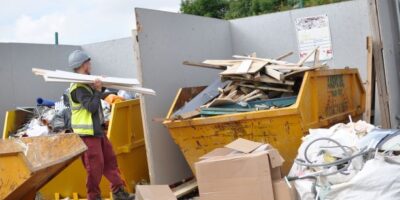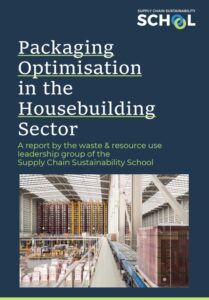A NEW detailed report by the School demonstrating the opportunities, challenges and practicalities of optimising packaging.
This comprehensive report harnesses the expertise of four of the UK’s biggest and most influential housebuilders – Bellway Homes, Crest Nicholson, Taylor Wimpey and Vistry Group, working in partnership with Waste Management experts Biffa and Reconomy, together with Ibstock, Stark Group, Saint Gobain and Zero Waste Scotland. The partners listed have co-funded this project, also donating their valuable time and helping the project team to engage with 23 of their specialist suppliers, manufacturers and merchants, selected to cover all the most significant aspects of the housebuilding supply chain. The report also reaches beyond this sector, providing knowledge, ideas and potential solutions for any organisation interested in optimising the packaging they generate, transport or receive on site.
Moving to a circular economy: waste is a resource
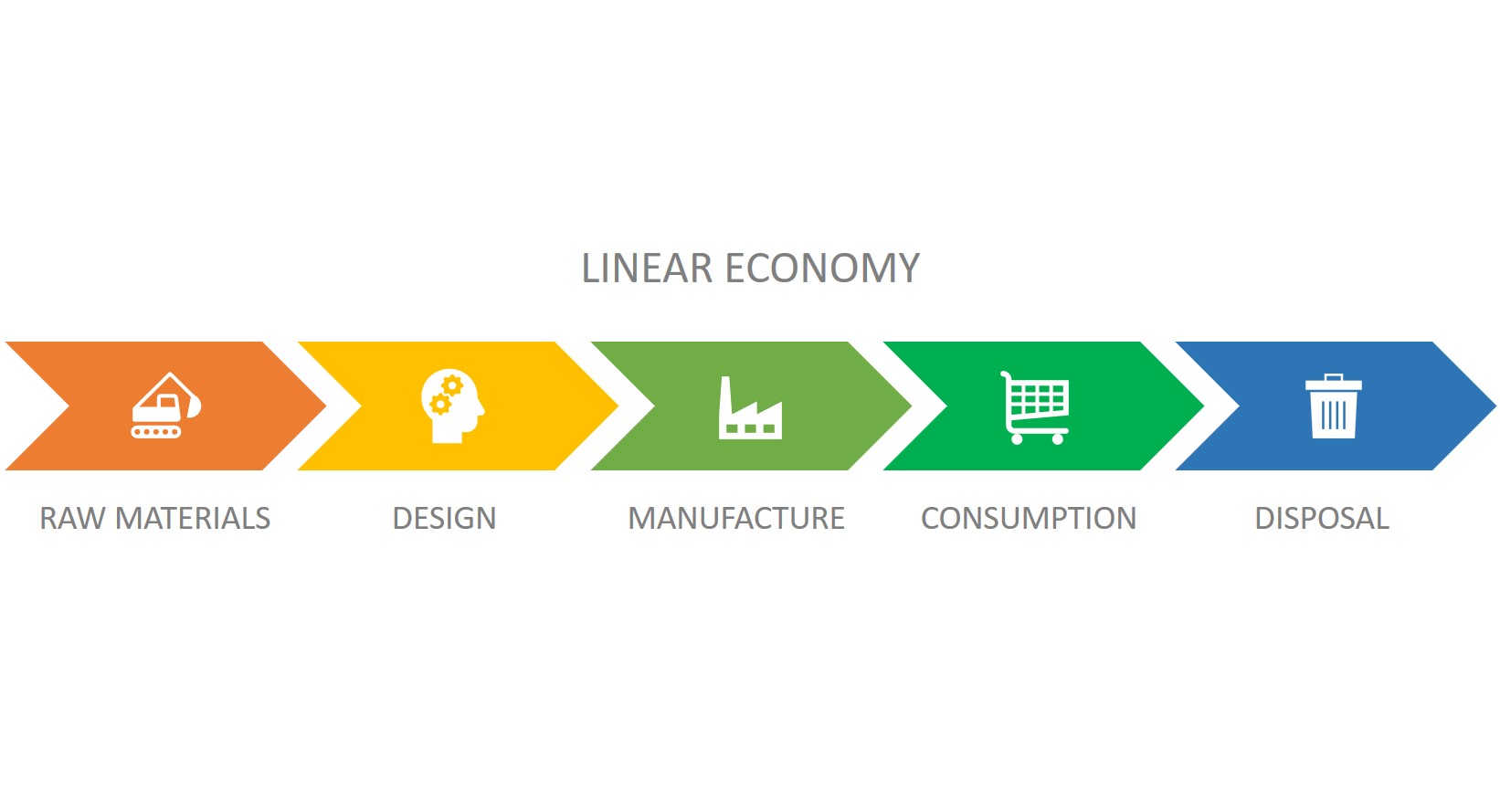
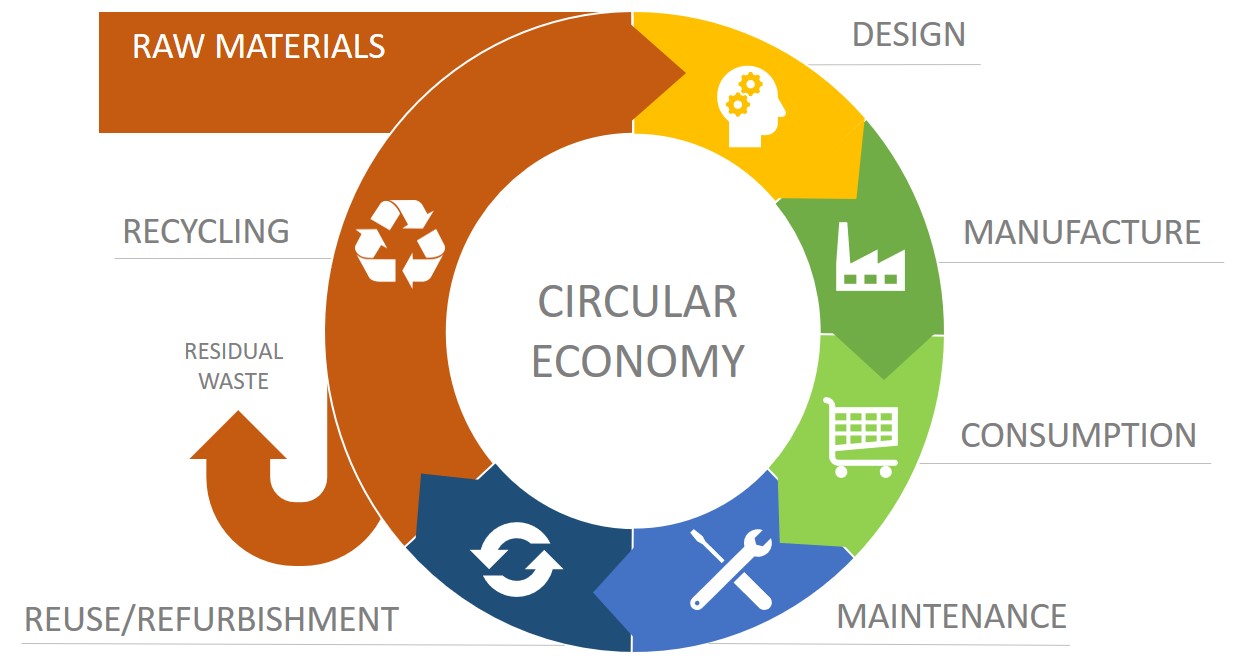
Moving to a world with zero waste
In 2018* the UK generated 67.8 million tonnes of non-hazardous construction & demolition waste, of which 62.6 million tonnes was “recovered” – this was including reuse, recycling and backfilling. This represents a recovery rate of 92.3% and would have been progress for our industry when we were targeting “Halving waste to landfill”. However we must now move to a more resource efficient world with zero waste and a circular economy.
We need to think about the bigger picture as we become more aware globally about the impacts of our throwaway culture. It is estimated that by 2050 there could be more waste plastic in the ocean than fish and that if everybody used resources at the same rate as an average EU resident, we would need at least 3 planets to sustain ourselves.
The true cost of waste in a project is often underestimated.
It is estimated by Zero Waste Scotland that 13% of raw materials ordered are discarded unused. With many main contractors struggling to make 2% profit margins we need to understand that by reducing waste we will increase our efficiency and profitability.
Most waste is produced on-site through: over-ordering; ordering the wrong thing; damage by mishandling materials; off-cuts; inadequate storage of materials; and unnecessary packaging of construction materials, e.g. plastics and cardboard. All of this before we even consider the cost of the processes and the amount of Carbon involved!
In addition, reducing our consumption of raw materials and being more efficient with what we use results in a wide range of environmental and social benefits associated with the consumption of fewer resources and the disposal of waste products. Clearly there is a cost saving too.
(*2018 is the latest year for which figures are published by DEFRA – July 2021 update: UK Statistics on Waste).
The waste hierarchy
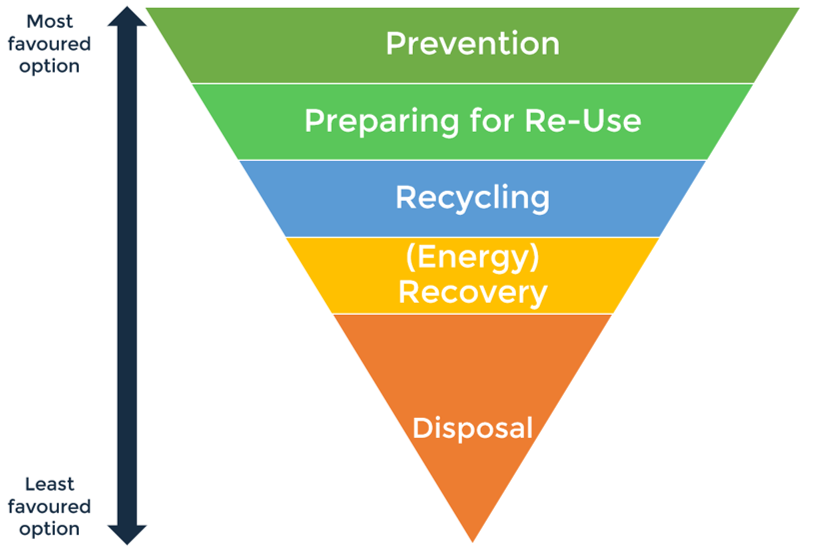
We can all play a role in tackling these problems. As a sub-contractor, simple changes on-site to reduce, re-use and recycle your construction waste can bring many benefits. This is what we refer to as the waste hierarchy, a useful guide for the sustainable treatment of waste, prioritising waste treatment in the following way:
- Prevention
- Preparing for Re-use
- Recycling
- Other recovery (such as energy recovery)
- Disposal, usually to landfill
A paradigm shift is needed when we think about the resources we use, away from a linear ‘take – make – dispose’ approach to a cycle which uses products or materials that have reached “end of life” as inputs to produce the next generation of products that we need. There is also the need for thinking laterally and choosing different materials or different product/service models that bring resource efficiency benefits.
A simple construction example of this might be using aggregates made from old crushed concrete or blast furnace slag, instead of virgin aggregates from a quarry or dredged from the sea, in the production of new concrete.
Waste Management - Sustainability Short
A short animation on how to prevent and reduce waste on site.
Material Exchange Platforms (MEPs) are schemes whereby excess materials and products can be exchanged from one user to another, reducing the volume of waste to landfill.
Use the map to find out the locations of MEPs in the UK and to find out more information on exchanging material. You may have surplus stock from a recently finished project, or are looking for second hand upcycled furniture; these are some examples of how you might use MEPs.
If you are aware of any MEPs that are should be added or deleted from the map, or information that should be revised, please complete this form.
Ibstock Case Study: Reducing Plastic Packaging
A video case study from brick manufacturer Ibstock outlining how they have reduced plastic packaging used on their products, with the aim of reducing preventable plastics by 40% by 2025. It outlines the benefits, challenges and progress so far.
Waste and Resource Efficiency
Waste: The Waste Hierarchy
Video
Waste and Resource Efficiency
WRAP ‘Designing for Resource Efficiency’
Web link
Waste and Resource Efficiency
Introduction to Waste
E-learning Module
Waste and Resource Efficiency
Ellen MacArthur Foundation – The Circular model
Web link
Waste and Resource Efficiency
The Circular Economy
E-learning Module
Waste and Resource Efficiency
WRAP – Designing Out Waste: guide for Buildings
Document / Presentation
Waste and Resource Efficiency
Environmental impact of higher recycled content
Document / Presentation
Waste and Resource Efficiency
Protocol for reusing structural steel
Document / Presentation
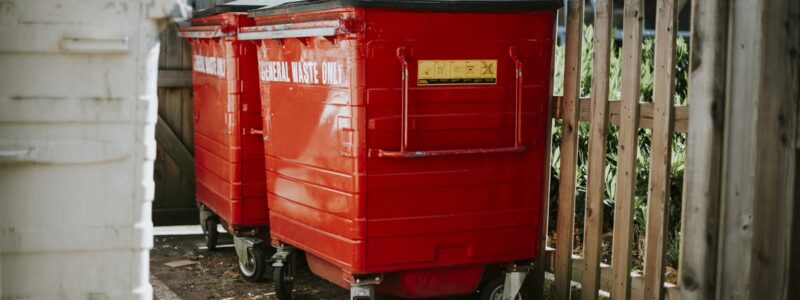
“The UK’s commitment to Net Zero by 2050 has brought into sharp relief the need for individual businesses to have clear plans as to how they will comply – with a focus on minimizing waste, Circular Economy and efficiently managing waste as a resource. I hope you will find the resources we are making available and the initiatives promoted through the Waste and Resource Efficiency Group useful”Matt Nichols, Divisional Director, Reconomy and Chair of the School Waste and Resource Use Working Group
Waste & resource efficiency group
